An Introduction to Fancy Shapes & Cuts
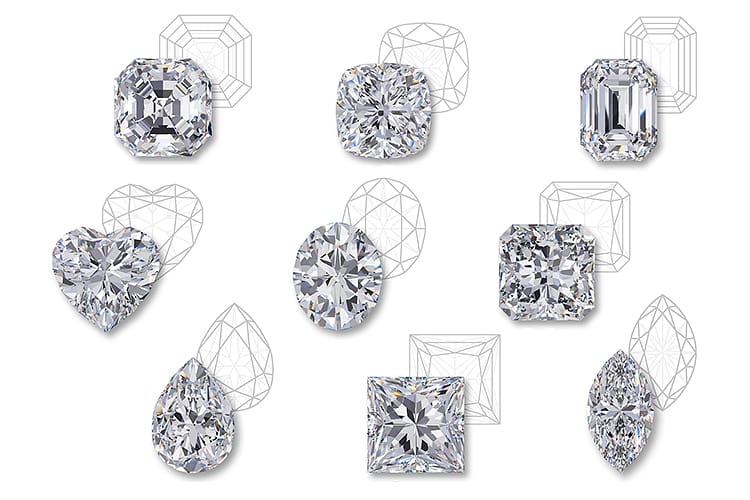
The cut is humanity’s contribution to the beauty of gemstones. Color, clarity, and carat weight, the rest of the 4 Cs of gem grading, come mostly from Nature. What we call the cut not only determines how precisely a finished gem is fashioned but also its shape. Although rounds and other standard shapes have long dominated the market, fancy gem cuts offer many alternatives.
What are Standard Gem Shapes?
For faceted gems, standard shapes include rounds, squares, and rectangles. For cabbed gems, rounds and ovals are standard shapes. Rounds have dominated the faceted gem market since the 1880s when Tiffany and Co. created the six-prong setting so often seen in solitaire rings now. The development of the modern round brilliant cut has made rounds more dazzling than ever before. As a result, rounds have become more popular.
What are Fancy Gem Cuts?
Despite the dominance of rounds, fancy gem cuts still hold their own. Customers looking for something unique, symbolic, or vintage can turn to these different cuts. For faceted gems, a fancy cut is any cut other than a round. This category includes ovals, pears, hearts, and other cuts, too. Fancy cab shaped gems are anything other than a round or oval. They include rectangles, squares, crosses, tear drops, and freeform shapes.
The beauty of each shape is a matter of personal preference. However, in several respects, fancy gem cuts have advantages over rounds:
- When compared to a round of the same carat size, fancy shapes will look larger face-up and have lower prices.
- Rounds sell at premiums due to their popularity and the fact that faceters must discard more rough during the round cutting process.
- Rounds don’t make ideal shapes for gems past three carats in size. Enormous circles aren’t attractive. Enormous hearts or pears, on the other hand, look perfectly beautiful.
Here is a breakdown of the most commonly seen fancy gem cuts in approximate order of popularity.
Cushion Cut
The cushion cut, also called the pillow cut, is essentially a square with rounded corners and sides, like the cushions of a couch.
The cushion cut has large facets. This means, despite being a brilliant cut, it returns less light than a round brilliant and has a blockier light return pattern. While this quality gives cushions a vintage feel, it also makes them unforgiving with flaws. Any inclusions will be clearly visible through these large facets, which act as windows into the stone. White diamonds will also show any color. One advantage of the cushion, however, is that it has more fire than other cuts, including the round.
While most cushions are squares, some are rectangular. The ideal ratio for rectangular cushions ranges from 1.15 to 1.20. A rectangular cushion should be long enough to be clearly distinguishable from a square but not too long and narrow.
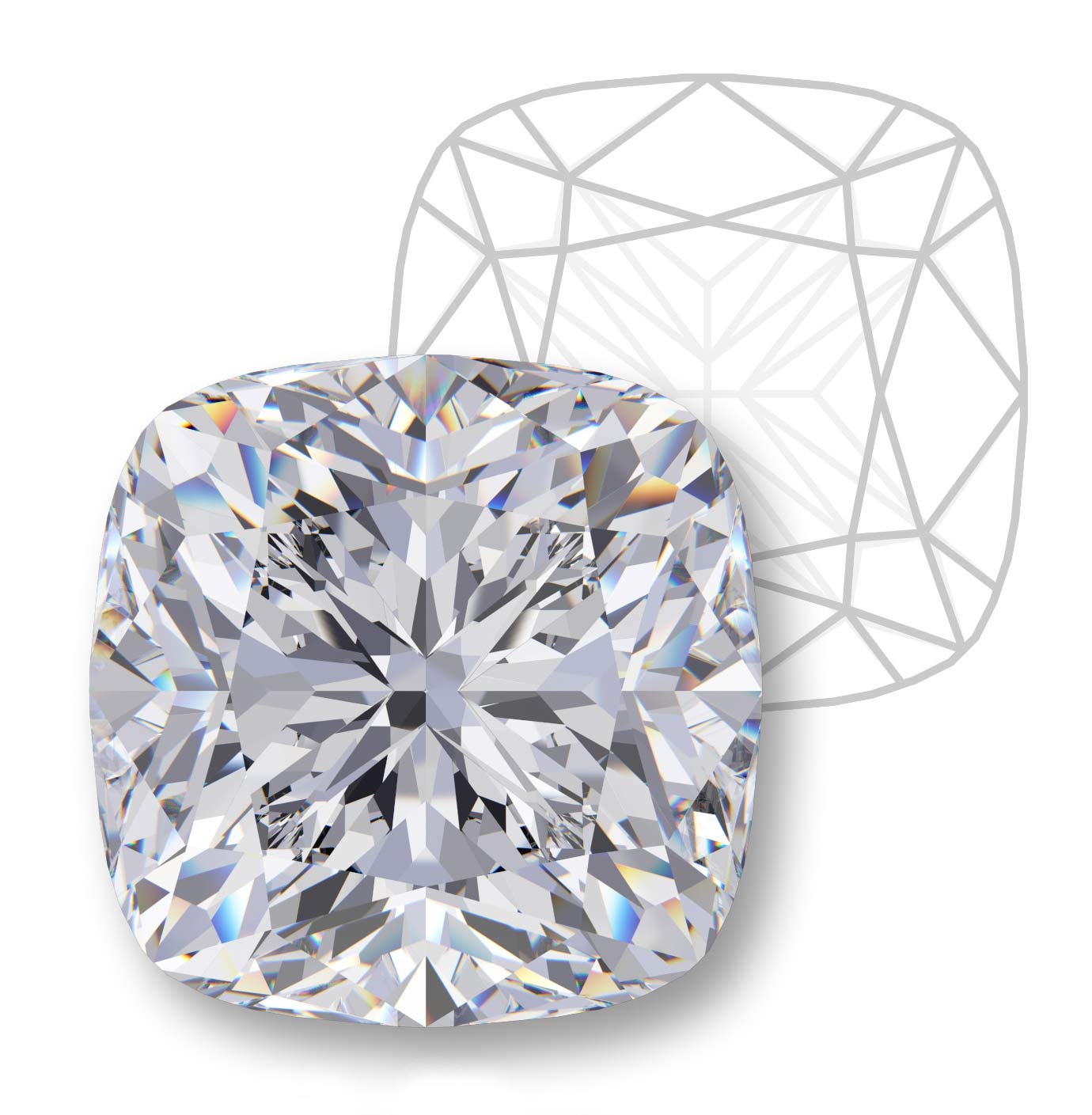
Oval Cut
The elegant oval cut is particularly suitable for rings. The shape makes the wearer’s hand appear slimmer. Plus, since the cut contains no sharp corners, the stone runs less risk of chipping.
Modern ovals are cut in the brilliant style with 58 facets. Because they have more sparkle, ovals hide inclusions much better than cushions. This holds especially true around the “head” or “end” of the oval, where the facets gather more tightly.
The oval cut does have a fatal flaw. It exhibits a type of extinction known as a bowtie, a dark band across the middle of the stone caused by poor light reflection and the viewer’s shadow. Each oval stone will have one. While barely perceptible in well-cut ovals, they appear ruinously in poorly cut stones.
The ideal proportion for ovals ranges from 1.30 to 1.50. In addition, make sure the shoulders on an oval are neither too “high” and bulging nor too flat. Both make for an unattractive stone, and bulging shoulders hide weight.
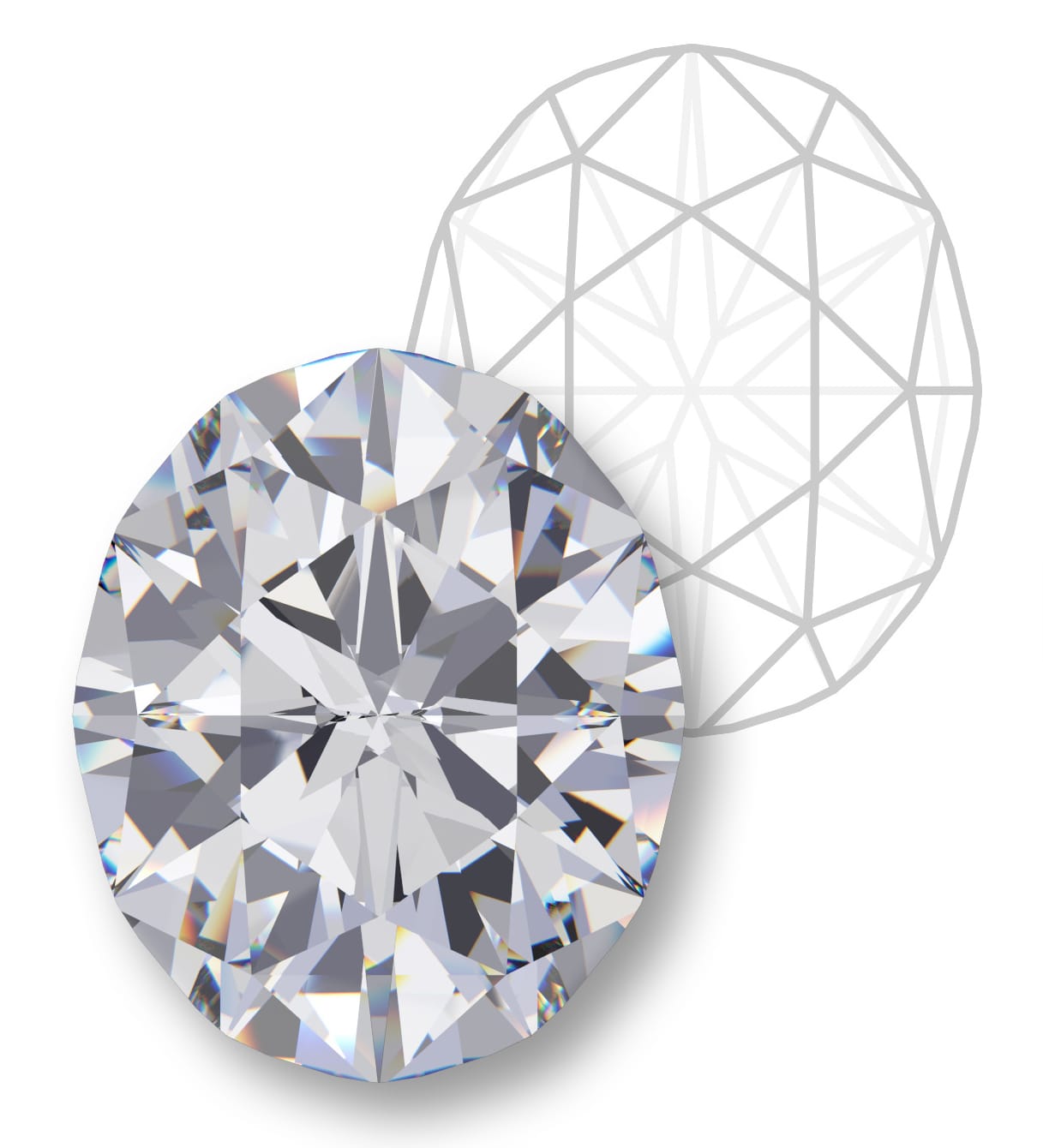
Princess Cut
Invented in the 1960s, the princess cut is essentially the square version of the round brilliant. It enjoyed popularity for decades due to its brilliance and modern look. Its sharp edges mean that faceters can retain more rough during the cutting process. As a result, princess cuts are much more affordable than rounds.
The princess cut does have a drawback. Its corners make it prone to chipping. Jewelers must make sure to protect the corners.
Princess cuts can have different numbers of chevron facets on the pavilion. While there is no perfect number, too many can break up the reflections, giving the stone a crushed ice look. Too few reflections can make the stone look blocky.
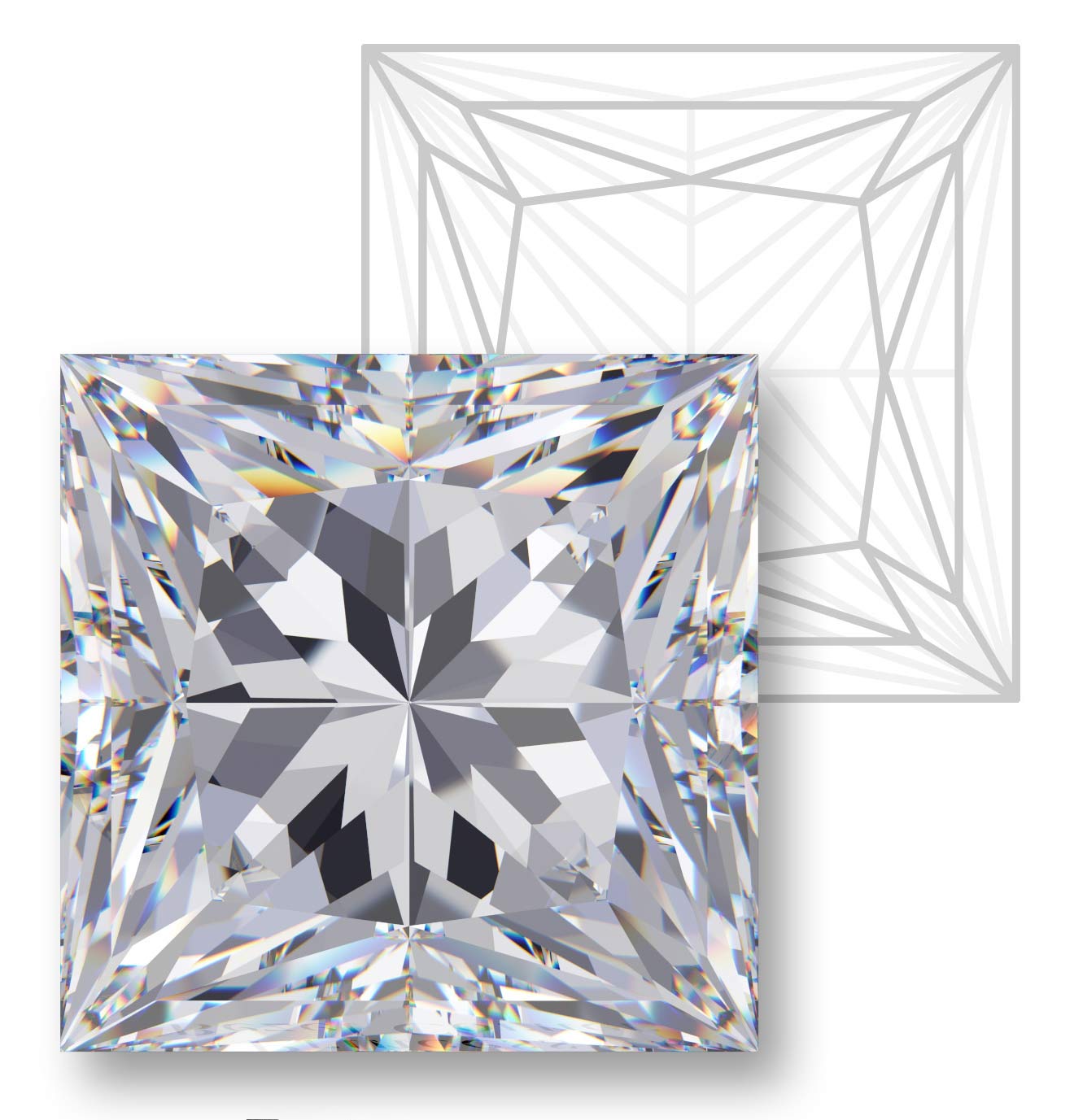
Emerald Cut
Although named after the emerald and often used on those gems, emerald cuts are applied to many gemstone species.
Known for its “hall of mirrors” effect, the emerald cut creates this dramatic pattern by alternating lines of light and dark. This effect is caused by step cuts, straight cuts parallel to the stone’s girdle, which are clearly visible through the stone’s large table.
The emerald cut isn’t as fiery or sparkling as most other cuts. Instead, it reflects light in sheets, creating a clean, elegant look. However, since it has the largest table of all fancy gem cuts, it’s also the least forgiving of inclusions. Any flaw will be clearly visible, and white diamonds will also show any color.
Emerald cuts feature beveled corners. Ideally, faceters should make the bevels wide enough for setting prongs to fit securely but not so wide that they detract from the rectangular appearance of the stone.
An emerald cut’s pavilion should also be angular and tapered rather than curved. Narrow bevels as well as bulging pavilions increase the carat weight without increasing size. Bulging pavilions also decrease the brilliance of the stone. The ideal proportion for an emerald cut ranges from 1.40 to 1.50.
Related to the emerald cut, a baguette cut is a rectangular or trapezoidal step cut but with fewer facets and no bevels.
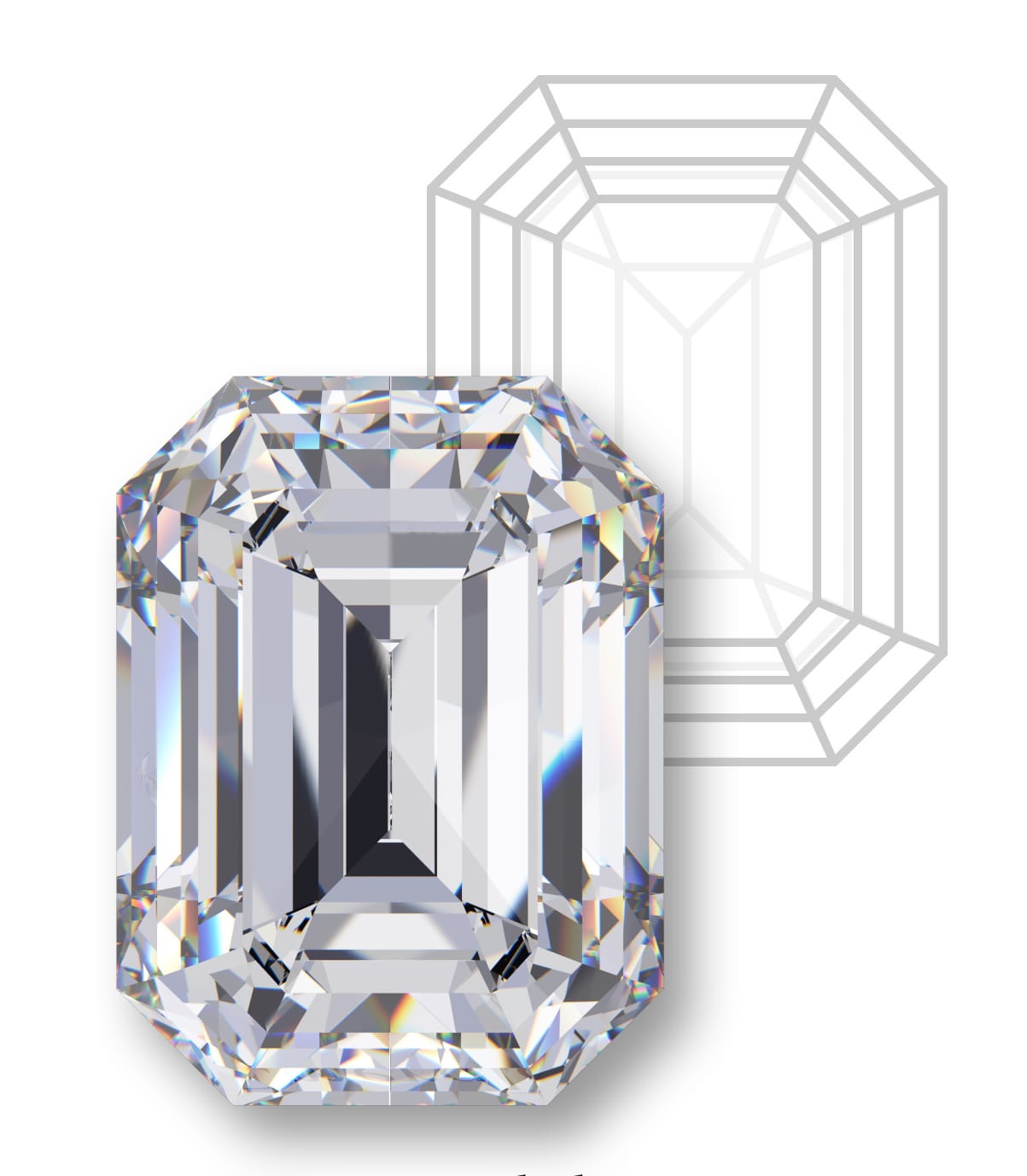
Radiant Cut
Just like the emerald cut, the radiant cut is a rectangular cut with beveled corners. It differs only in consisting of brilliant-cut as well as step-cut facets. This makes it more brilliant than emerald cuts and better at hiding inclusions.
In terms of its proportion ratio and corner bezel factors, it’s also similar to the emerald cut. Like most step cuts, radiants concentrate color very well. This makes them ideal for colored gemstones but less so for normal color scale diamonds with low color grades.
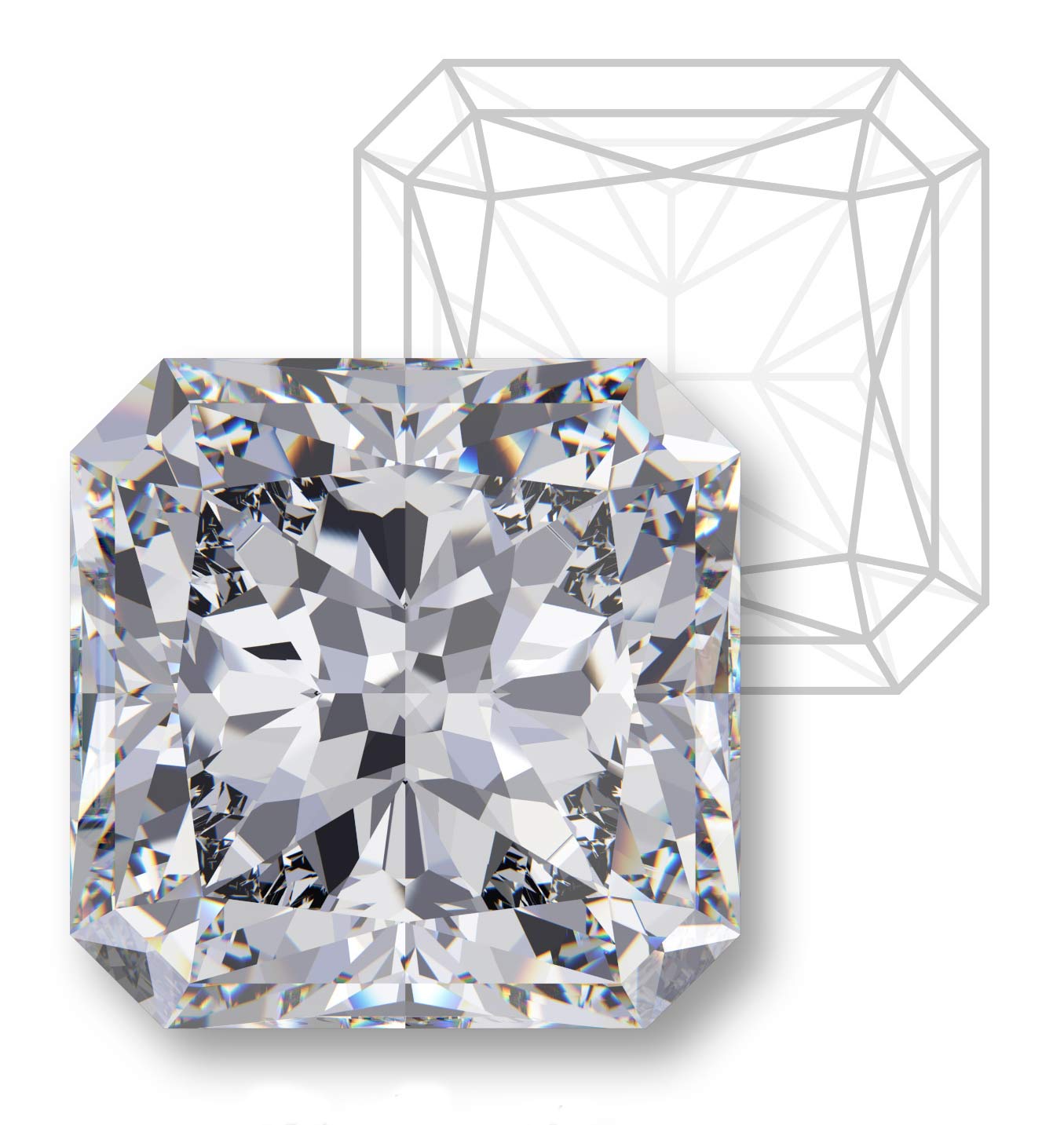
Pear Cut
The modern pear cut is a brilliant cut with 58 facets.
Despite its brilliance, a pear will show inclusions more readily than other fancy shapes. The tip of the stone is also particularly prone to showing color in white diamonds. On the other hand, the tip hides inclusions well. Ideally, faceters should protect the tip with a V-shaped prong to protect against chipping.
Like ovals, pears make the wearer’s hand appear slimmer but are susceptible to bow ties. When buying a pear-cut gem, make sure the head, shoulders, and wings aren’t too flat or too bulging. Flat curves make the stone look malnourished, while bulging curves hide weight and make the stone look chunky. The ideal proportion for a pear ranges from 1.40 to 1.75.
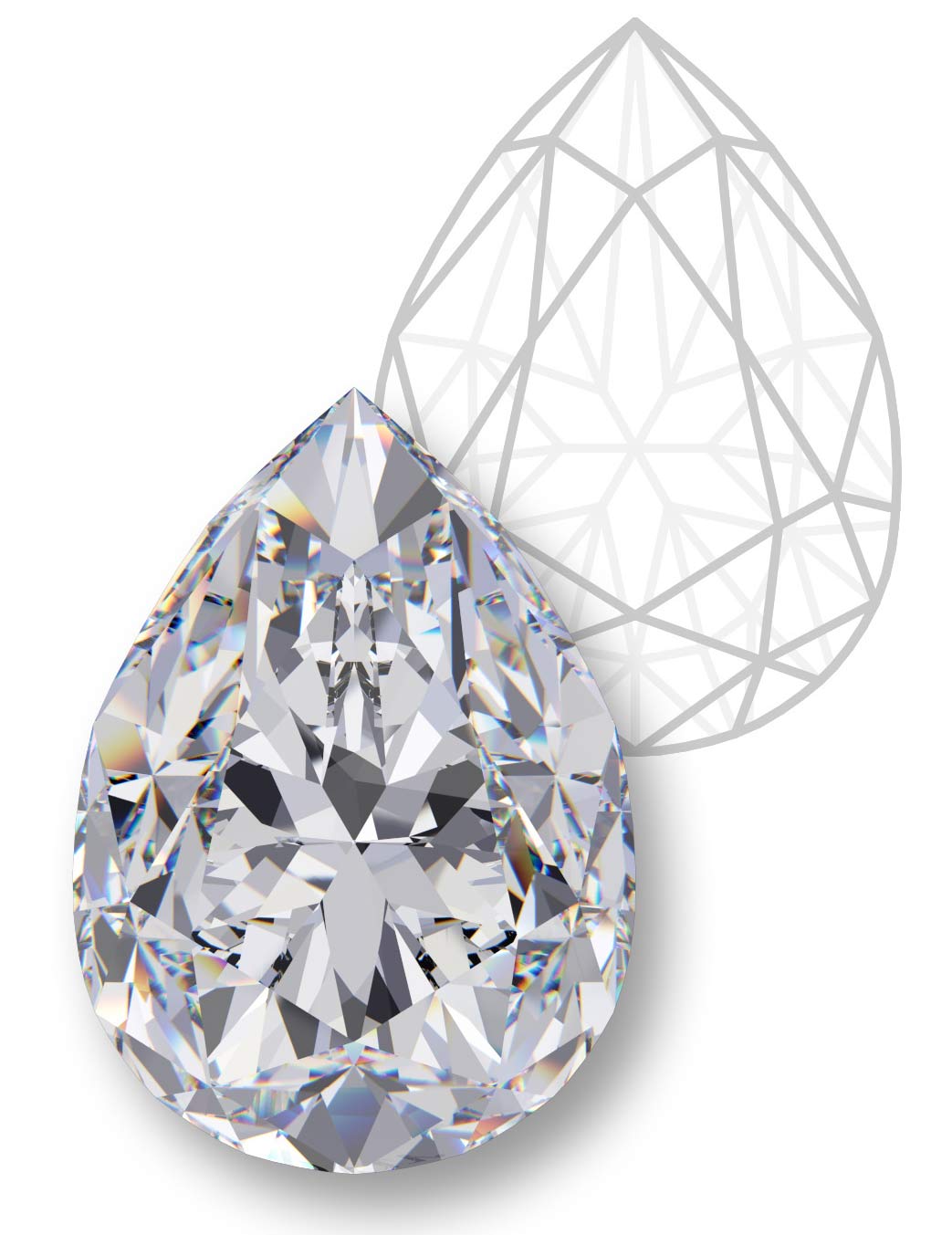
Asscher Cut
Essentially a square emerald cut, an Asscher cut has a smaller table, larger step facets, and a higher crown.
Like the emerald cut, it displays the “hall of mirrors” effect and will more likely show inclusions than other fancy gem cuts. It will also likely show color in white diamonds. Its beveled corners can make the stone appear octagonal when unmounted. Once set in jewelry, however, the stone will appear square.
The Asscher cut, usually considered a vintage cut, has seen a resurgence in recent years.
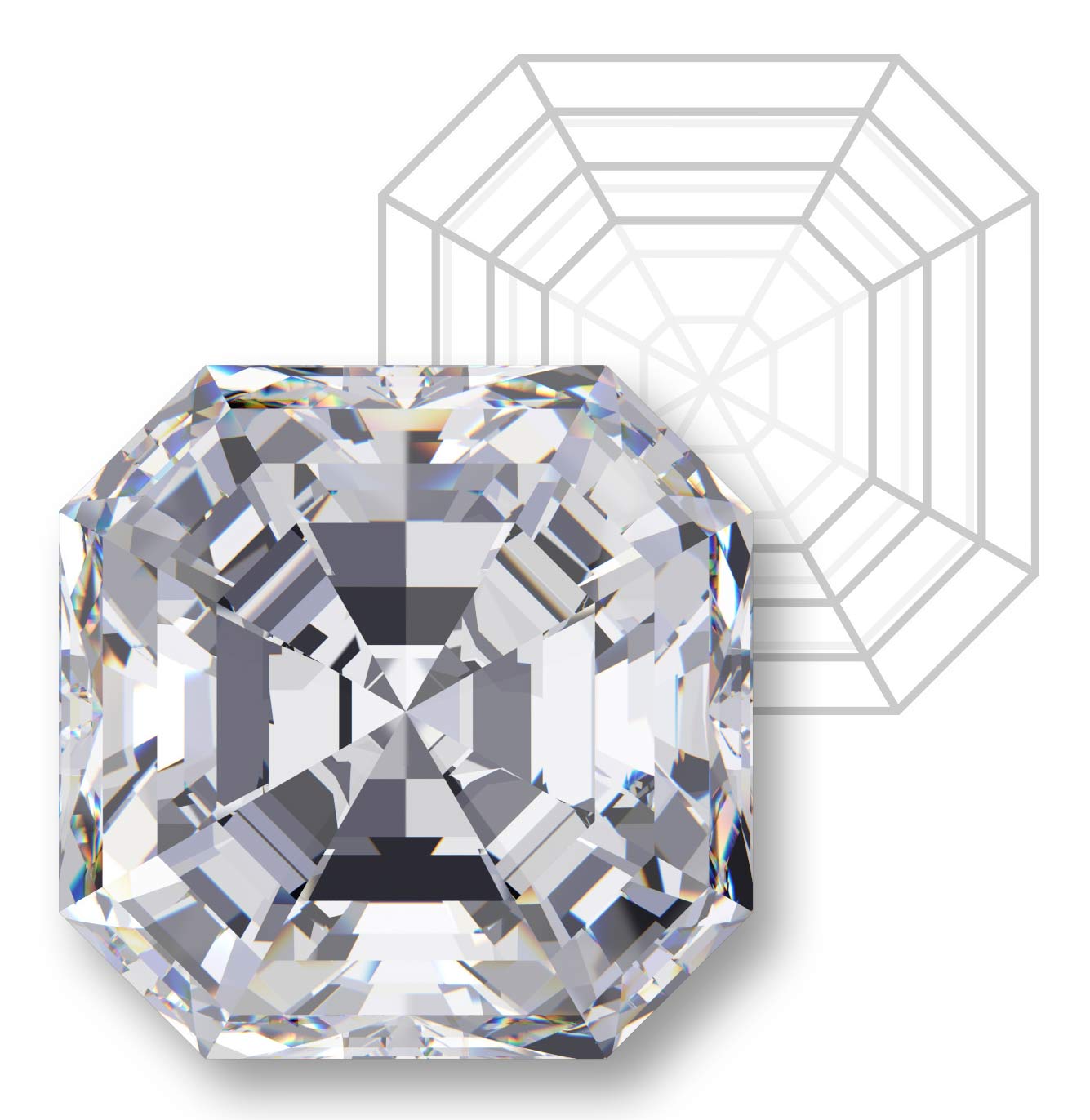
Marquise Cut
The marquise or navette cut has the greatest crown surface area of any fancy cut. Thus, it makes stones appear larger than any other cut for the same carat size.
The marquise’s elongated and thin shape flatters the wearer’s hand but also makes the stone prone to chipping. Being a brilliant cut, the marquise’s two points on either end hide inclusions well. However, the points tend to appear darker in stones larger than one carat. Therefore, go up in color when buying a large marquise-cut white diamond.
Symmetry plays a particularly important role in a marquise, since any variation in such a slender shape become glaringly obvious. The points of the marquise must align, and the stone’s shoulders should curve smoothly (not fall in or bulge out) and match on either side. The ideal ratio for a marquise ranges from 1.75 to 2.15.
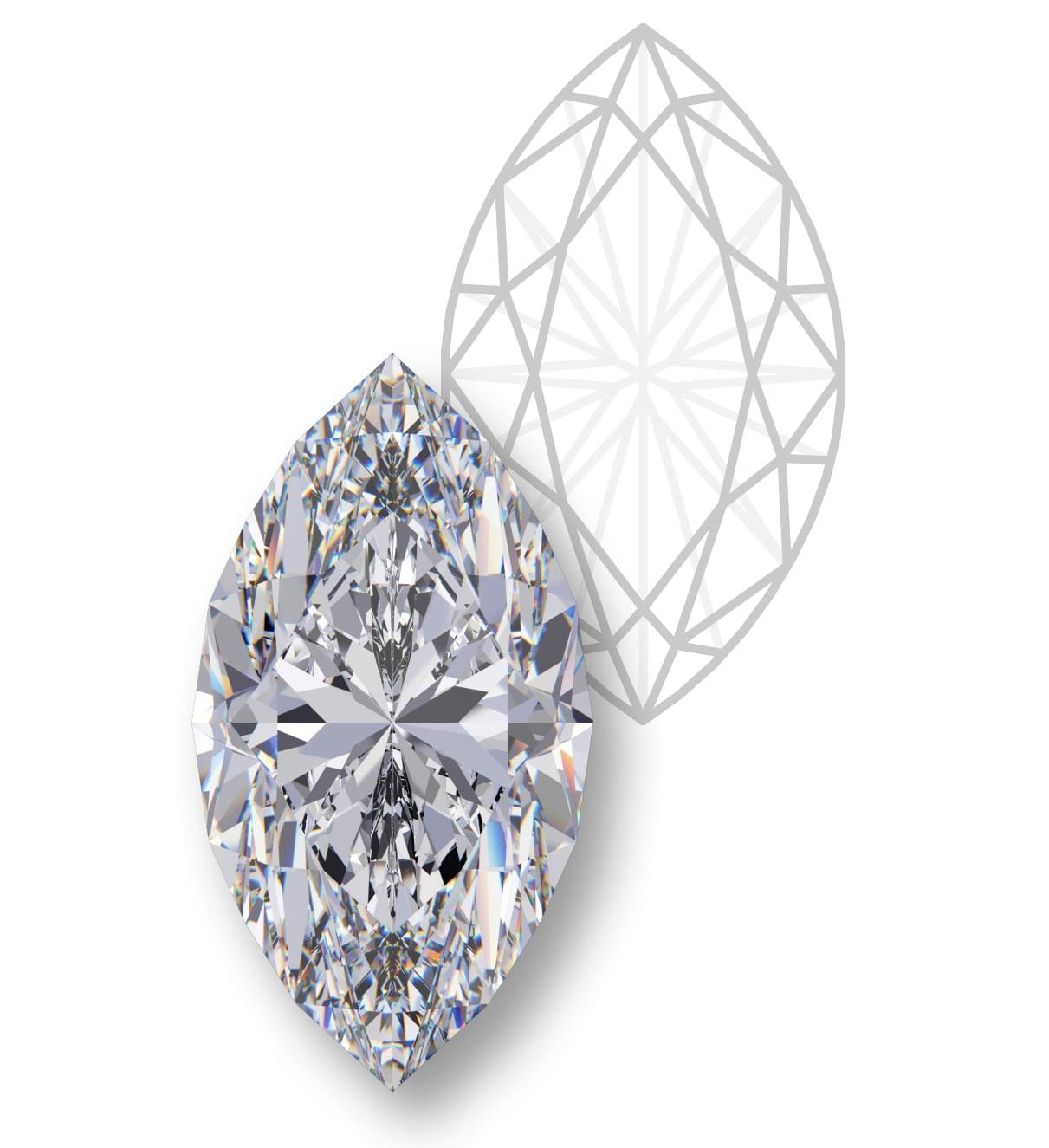
Heart Cut
Although not as popular in recent years, the heart cut has a long history and beautiful symbolism. The modern heart is a brilliant cut that is as long as it’s wide.
As with the marquise cut, symmetry plays a very important role. The two halves of the heart should be identical, with the lobes round but not bulging. The center cleft should be deep enough to make the heart shape distinct.
Heart cuts look better in larger sizes (half carat or above). In small sizes, the shape won’t stand out. The setting style and prong positioning will also either enhance or diminish the heart’s outline. Ideally, the prongs should sit at the tip and the lobes of the diamond, not in the cleft. Hearts may tend to show bowties, although not nearly as much as oval, radiant, marquise, or pear cuts.
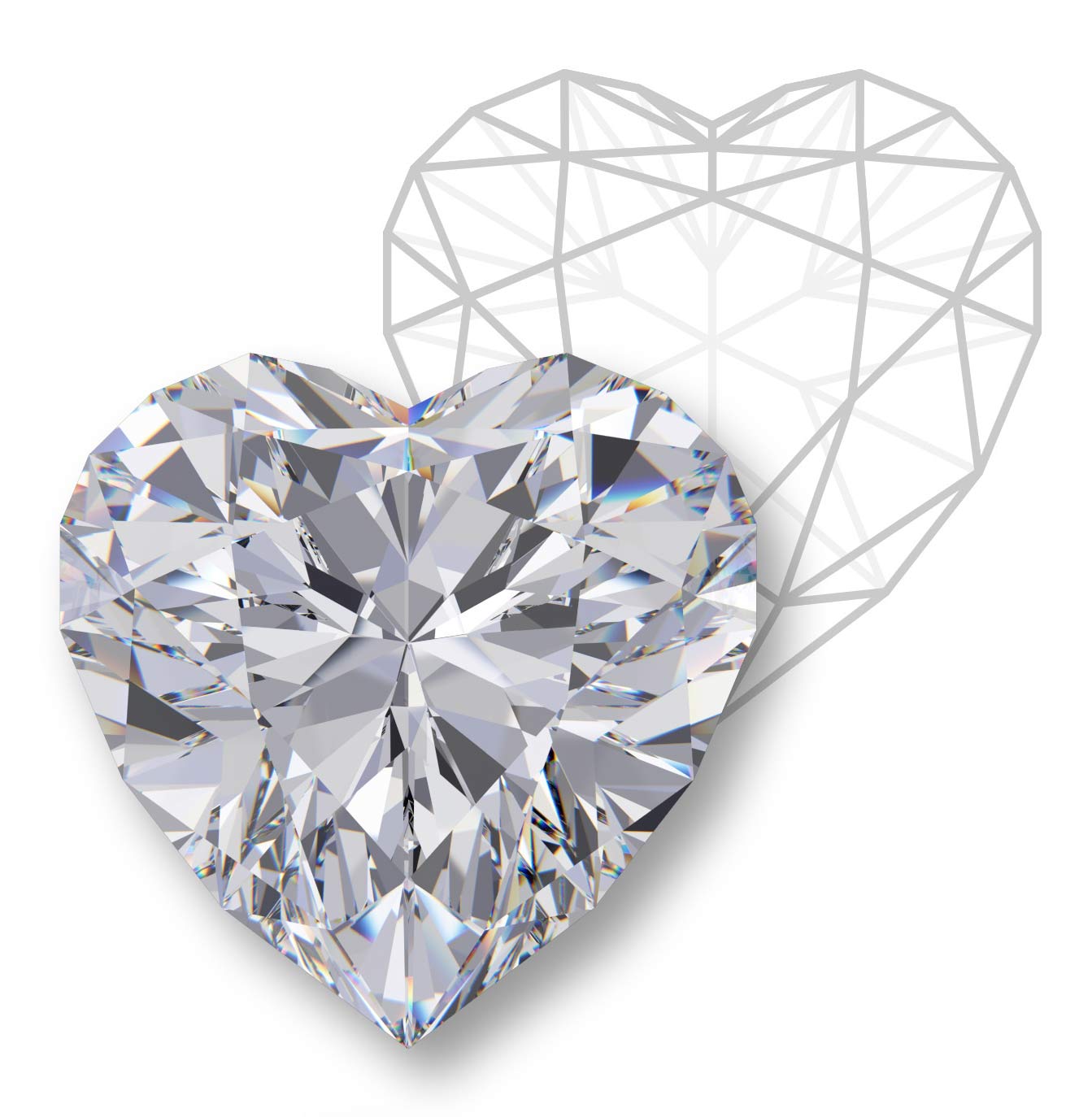
Other Fancy Gem Cuts
Other fancy shapes include shield cuts, rhomboids, parallelograms, triangles, hexagons, and octagons.
Pros and Cons of Fancy Gem Cuts
Different fancy gem cuts enhance different qualities of a gemstone, such as sparkle, fire, color or clarity. Fancy cuts have looser proportion standards than round brilliant stones. However, when shopping for fancy shapes, keep these points in mind:
- Avoid extinction (dark patches such as bowties) andwindows (large, see-through areas).
- Remember that unnecessary bulges add weight (and cost) without beauty.
Beyond that, fancy gem cuts as a group offer so much variety that surely anyone can find beauty to behold.
Source: International Gem Society, www.gemsociety.org